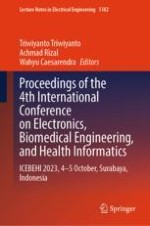2024 | OriginalPaper | Chapter
Comparison of CNN and KNN Methods for Cataract Classification and Detection Based on Fundus Images
Authors : Farah Hanifah, Nur Alifia Azzahra, Yunendah Nur Fuadah, Alvian Pandapotan, Erni Yanthy, Rita Magdalena, Sofia Saidah
Published in: Proceedings of the 4th International Conference on Electronics, Biomedical Engineering, and Health Informatics
Publisher: Springer Nature Singapore
Activate our intelligent search to find suitable subject content or patents.
Select sections of text to find matching patents with Artificial Intelligence. powered by
Select sections of text to find additional relevant content using AI-assisted search. powered by
